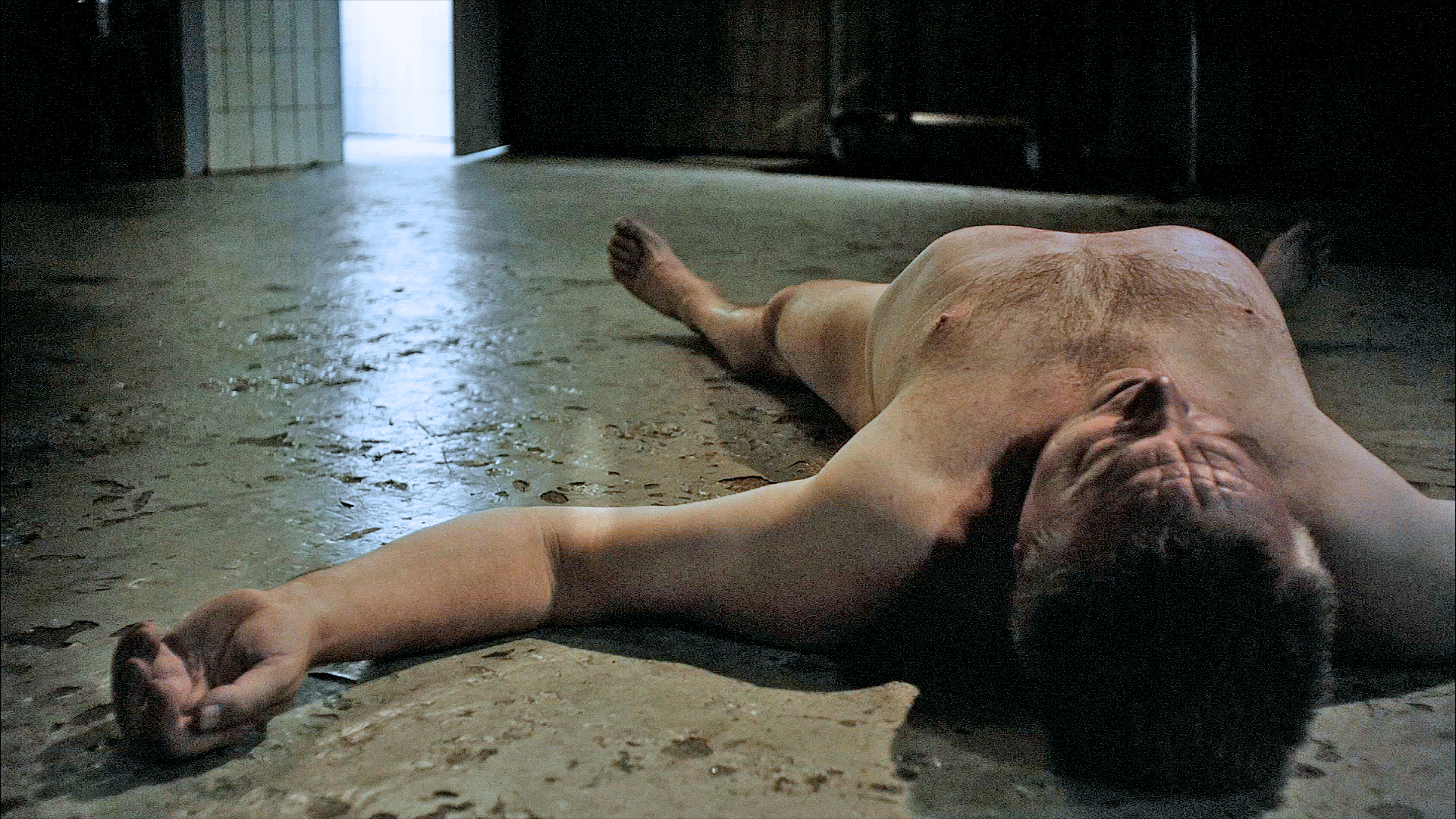For what must be the majority of its running time, Tintorera is a sun-and-skin melodrama set in a Mexican resort village where the loitering Steven and Miguel (Hugo Stiglitz and Andrès Garcia) navigate the treacherous waters of a sexy threesome with an English tourist, Gabriella (Susan George), who declares that the only thing off-limits in their relationship … is love. By contrast, about a third of the film is a skeevy underwater adventure-cum-travelogue in which Steven, Miguel, and other local fisherman absolutely have their way with the aquatic kingdom, skewering barracudas and manta rays and using them as bait for larger fish, hanging sea tortoises off the side of boats and slashing them open for blood chum, and cutting open tiger sharks and letting them bleed out on the ocean floor. (Seriously, this movie never met a fish it didn’t want to stab in the face.) And then, for just a few fleeting moments at a time, Tintorera is one of the great killer-shark movies, with underdressed women and overconfident men getting torn apart in mid-swim before the shark flees the scene with a head or torso clutched in its jaws like a happy spaniel carrying a pheasant, entrails dragging behind and gallons of blood saturating the waters behind them.
Continue readingAll the Sins of Sodom
78/100Sex and cinema have a complicated relationship, and sex-film director Joe Sarno understood this better than most. In the U.S., nudity and simulated sex are generally understood as appeals to prurience-and, often, commercially exploitative gestures-but they can be more than that. They have to be, if they are part of a serious film. A filmed sex scene may be arousing, sure, but it’s also a vehicle to express character. Depending on performance and visual approach, screen sex can demonstrate frustration and restlessness as easily as romantic contentment; an actor can convey self-loathing instead of, or in addition to, satisfaction. That dicey territory-the sex film that turns you on while treating the action as problematic-was Sarno’s turf.
Continue readingVibrations
62/100Sex and cinema have a complicated relationship, and sex-film director Joe Sarno understood this better than most. In the U.S., nudity and simulated sex are generally understood as appeals to prurience-and, often, commercially exploitative gestures-but they can be more than that. They have to be, if they are part of a serious film. A filmed sex scene may be arousing, sure, but it’s also a vehicle to express character. Depending on performance and visual approach, screen sex can demonstrate frustration and restlessness as easily as romantic contentment; an actor can convey self-loathing instead of, or in addition to, satisfaction. That dicey territory-the sex film that turns you on while treating the action as problematic-was Sarno’s turf.
Continue readingScum of the Earth
28/100Liquid Sky
77/100Say what you will about Liquid Sky, there’s no other movie like it. Shot largely in a nightclub that feels warmed to sweltering by big costumes and body heat and a crowded penthouse apartment with a killer view of the Empire State Building (and a UFO on the porch), it mashes up an annoyingly slack New Wave fashion show with a New York sci-fi story about aliens who crave heroin and/or human orgasms cooked up by frisky Russian immigrant writer, director and co-editor Slava Tsukerman.
Continue readingBlood Diner
52/100So bad it’s good? I wouldn’t go that far. But Blood Diner is definitely something—a no-frills pastiche of 1950s disembodied-brain sci-fi potboiler, 1960s Herschell Gordon Lewis splatter movie, 1970s cannibal-cuisine flick, and early-1980s buddy-cop movie. I’m tempted to say it stitches together a Frankenstein’s patchwork of genre movies because it has no vision of its own, but that’s too glib. If nothing else, 20-something Asian-American director Jackie Kong (Night Patrol) loves L.A.: she wrapped all of those genre influences around a love letter to the city’s underground music scene circa 1987, casting punk rockers and rockabilly singers as extras, bit players, and movie stars in a story about a pair of pretty-boy sibling serial killers who run a popular foodie destination on Hollywood Boulevard where the vegetarian dishes are, unbeknownst to patrons, boosted by the presence of human flesh in the recipe.
Chopping Mall
40/100Chopping Mall is not the shopping-center slasher-movie its title suggests. Here’s what you really need to know: It includes a scene where a woman clad in light-blue Playboy panties runs screaming through the spacious halls of the Sherman Oaks Galleria in a hail of laser fire, chased by a killer robot resembling a cross between a Dalek from Doctor Who and Number Five from Short Circuit. The opening sequence features Paul Bartel and Mary Woronov in a cameo as their Paul and Mary Bland characters from the cult classic Eating Raoul. The always-game Barbara Crampton, who had just shot Re-Animator, takes her top off. And, like the maraschino cherry on top of a soft-serve strawberry sundae, the great character actor Dick Miller plays a crusty janitor who trash-talks one of the malevolent tin-can tyrants like a Jet giving the finger to Officer Krupke. Continue reading
Meat
57/100Philly-based distributor Artsploitation Films has just pulled a Dutch film called Meat (aka Vlees, 2010) out of the freezer, and it’s kind of a doozy. Produced by Amsterdam-based co-directors Maartje Seyferth and Victor Nieuwenhuijs (she’s the writer, he’s the cinematographer), Meat is a nonlinear murder mystery that starts out as day-in-the-life middle-aged sexual intrigue, morphs briefly into one of those young-people-and-discotheques Euroflicks, and finally turns into a post-modern police procedural. It’s not much of a whodunit, but it’s a pretty good example of a 21st-century grindhouse film, serving up pungent elements of low-budget horror and surrealism with erotic aromatics and a permeating abattoir stench. But I don’t want to oversell it. Just think Luis Buñuel crossed with Jörg Buttgereit. Continue reading



